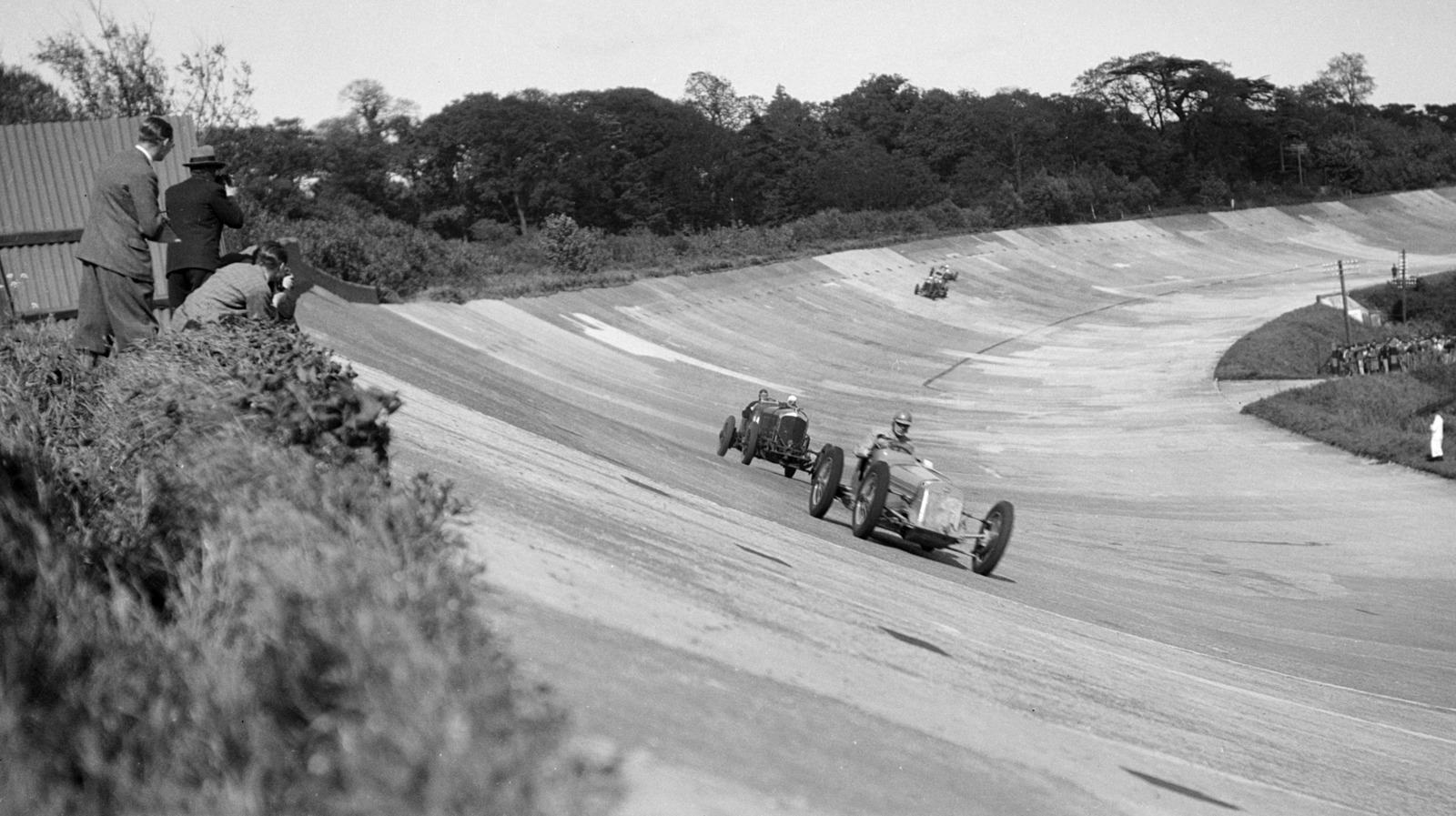Today, Britain is the near-official home of the FIA Formula One World Championship. Seven of F1’s ten teams and the championship’s commercial promoter are based in the United Kingdom. While Britain takes its pre-eminent position for granted, it was on the outside looking in over a century ago. The Royal Automobile Club couldn’t accept an invitation to host a round of the inaugural world championship season in 1925. Brooklands, the RAC’s primary racing facility, was in the midst of an ongoing noise restriction lawsuit at Brooklands.
Despite the British Empire being at its zenith as a global superpower in the 1920s, the country was largely an also-ran in international motorsport. Britain clung to Selwyn Edge’s fairytale win at the 1902 Gordon Bennett Cup as its claim to relevance. With Edge’s victory, the count.y earned the right to host the event in 1903. However, motor racing on public roads was banned on the island of Great Britain. As a result, the Cup was contested in Ireland, then part of the UK.
The birth of Brooklands
Britain lost the Gordon Bennett Cup in Ireland to Germany’s three-car Mercedes team. The race also spawned the myth that British Racing Green was created to honor the Emerald Isle. This ignores that Edge’s Napier and the other British entries in 1902 were painted Brunswick green, likely as a homage to the country’s railways. During racing’s fledging years, the island nation could never bring its full industrial to bear because of Parliament’s restrictive anti-car legislation.
Brooklands, the world’s first purpose-built race track, was built in South East England and opened in 1907 as the solution to the development woes of Britain’s auto industry. The circuit was a 2.7-mile bean-shaped oval with a fork on the main straight. Drivers would make a slight right to keep lapping or continue ahead to drive down the finishing straight.
Nearby residents detested the noise almost immediately. Shortly after Brooklands’ opening, Edge took part in a 24-hour trial at the track and drove single-handedly for the entire duration. Locals demanded that Brooklands never host night racing again, and the track conceded. A peace was seemingly established until racing halted for World War I, and Brooklands was commandeered to become an aviation facility.
The lawsuit
Racing resumed in 1920, but the surrounding communities decided to sue Brooklands in September and claimed that the circuit wasn’t adhering to their established agreement. The Brooklands Gazette, now known as Motor Sport magazine, published a two-page editorial to open its October 1924 issue:
“As we write, an action is pending between the residents of Weybridge and district on the one hand, and the proprietors Of Brooklands on the other, concerning this very matter, and we urgently recommend all motorists and motoring bodies, either sporting, social or trade, to rally round in support of the track. It is important too, that in this matter our aim should be, not merely to prevent further restrictions, but to have the existing ones removed.”
The editorial claims the lawsuit could be the death knell for Brooklands and racing in Britain. The magazine mentioned Autodrome de Linas-Montlhéry, a recently built permanent oval outside Paris. There were fears that the 1.5-mile French oval would easily become the world’s leading permanent circuit as the home of the French Grand Prix,the era’s most prestigious race. The timing couldn’t be worse, as the country recently had its second triumph on the international stage. Henry Seagrave won the 1923 edition of the French classic, the first Grand Prix victory for a British car.
The British Grand Prix Finally Arrives
Well, things got worse. In 1925, the sport’s global governing body organized its first-ever world championship, a precursor to Formula 1. Britain was invited to host a round of the five-race series to acknowledge Segrave’s competitiveness. However, without a suitable venue, the RAC was forced to decline. The lawsuit was eventually settled in July 1925, in the middle of the racing season. The settlement required all cars competing at Brooklands to be fitted with mufflers, something mentioned directly as a fear in the Brooklands Gazette editorial.
Fortunately, the British Grand Prix would debut as a world championship round in 1926. Sadly, a French Delage team won the race. Depressingly, the 1927 RAC-hosted round featured a Delage podium sweep en route to the world championship. The Golden Age of Grand Prix Racing, the unofficial digital bible for pre-war European racing, noted that both Brooklands races featured less than a dozen starters and massive timekeeping blunders from the RAC.
The 1928 British Grand Prix was canceled, and the event didn’t return until the 1948 edition at Silverstone. In fact, the entire championship collapsed, and no manufacturer won the title. Brooklands didn’t survive World War II. Portions of the banking were demolished to expand aircraft production facilities. Not to mention, the Luftwaffe bombed the site in 1940. With an impressive museum, Brooklands stands today as a ruin to a bygone era when Britain was an underdog in international motorsport.



